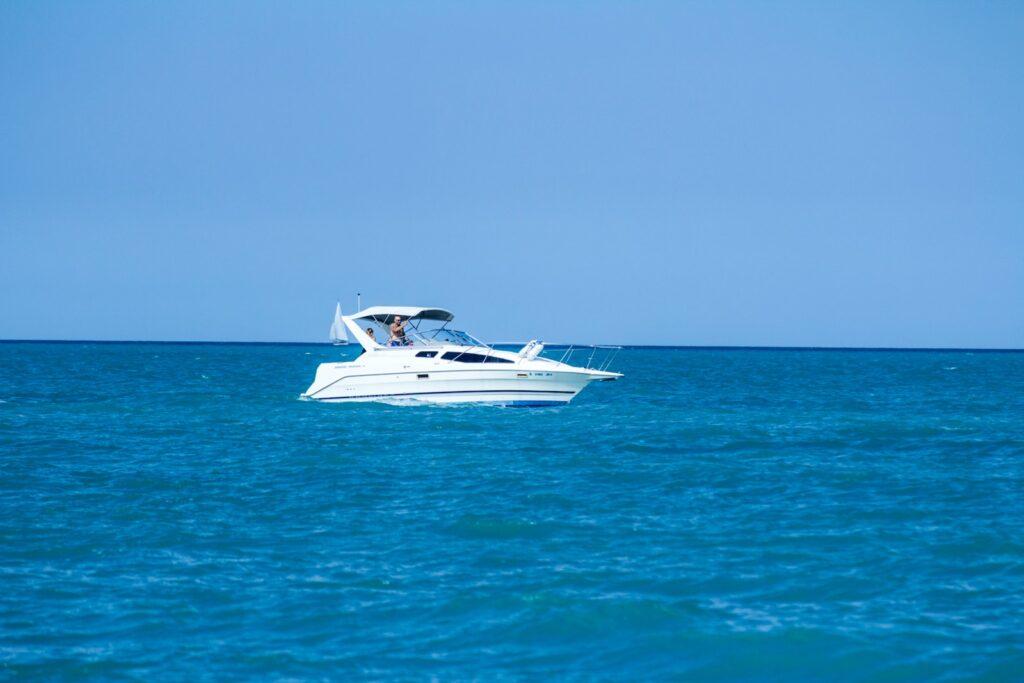How to Wire Boat Radio to Battery
Key Takeaways:
- Understanding the Basics of Wiring: Before wiring a boat radio to a battery, it’s essential to understand the wiring fundamentals. Identify the positive and negative wires on your radio, usually red and black respectively. Then, connect the positive wire to the positive terminal on your battery and the negative wire to the negative terminal of your battery. Remember to install an inline fuse on the positive wire to prevent electrical faults. If unsure about any step, consider seeking professional help.
- Safety Measures and Preparations: Safety should always be paramount when dealing with electrical systems. Ensure you’re working in a well-ventilated area and disconnect the battery before starting work. Use the right wire size for the positive wire and install an inline fuse to protect your radio from electrical faults. Use appropriate and well-maintained tools and double-check your connections. Protective gear like safety gloves and eyewear can also prevent accidental injuries.
- Power Consumption and Battery Life: The duration for which a boat battery can power a radio depends on the battery size and type and the power requirements of the radio. Generally, a boat battery should be able to power a radio for several hours, but high-wattage radios may drain the battery faster. Always monitor the battery level and recharge as necessary.
Learning how to wire a boat radio to the battery is a crucial skill that every boat owner should have up their sleeve. It’s not just about keeping the party going; it’s about safety, connectivity, and ensuring you’re not left in silence in the great outdoors. In this article, we’ll dive into the simple steps to get your radio wired up correctly, ensuring that the good times (and the good tunes) never have to end. So let’s get into it, shall we?
Basics of How to Wire Boat Radio to Battery
Before attempting to wire a boat radio to a battery, it’s important to understand the basics of electrical wiring. Start by identifying the positive and negative wires on your radio. The positive is generally red or has a ‘+’, while the negative is usually black or marked with a ‘-’. Got ’em? Good.
- Identify the wires: On your boat radio, you’ll find two main wires. The positive one is usually red or marked with ‘+’, and the negative is typically black or marked with ‘-’.
- Connect the positive: This wire needs to go to the positive terminal on your battery. But before you make the connection, I strongly recommend installing an inline fuse close to the battery on this wire. It’s a small device that can prevent a world of trouble by protecting your radio from electrical issues.
- Connect the negative: You’ll want to connect the negative wire to the negative terminal of your battery.
- Test it out: With everything hooked up, switch on the radio and see if you’re picking up a signal. If so, you’re good to go!
- Ask for help if needed: Remember, even though this is a simple task, it’s perfectly okay to call in a pro if you’re not sure about something. Safety always comes first, and it’s better to be safe than sorry!
Grab your positive wire and hook it up to the positive terminal of your battery. But hey, don’t rush! Before making the connection, do me a favor and install an inline fuse on the positive wire close to the battery. It’s a little thing that can save your radio from any sudden electrical hiccups.
Now for the negative wire — it goes straight to the negative terminal of your battery. Make sure everything’s secure, then give your radio a test run.
If you’re unsure about any step, there’s no shame in getting a professional involved. Better safe than sorry, right? So there you have it, enjoy those sweet tunes on the water!

Preparing the Radio
Before you get started with wiring your boat radio to the battery, you need to prepare the radio properly. Start by identifying the positive and negative wires — typically red and black, respectively.
Check your radio manual if you’re unsure and the wire ends; if they are frayed or worn, trim them and strip back the insulation about a half inch. It’s a good practice to attach a ring or spade terminal to the end of these wires; these connectors will ensure a tight connection at the battery terminals. But before you start connecting, here’s a pro-tip: attach an inline fuse to the positive wire, it’ll be your first line of defense against electrical issues down the line.
Once you’ve prepared the radio, it’s time to connect the power cables. There will be both a positive and negative cable that need to be connected. These cables should be connected to the correct terminals on the battery, and they should be secured with a wire nut. Unless You have marine radio with bluetooth You will have to take care of wires that are crucial for the better sound.
It’s also important to make sure that the power cables are properly fused. This will help to prevent any damage to the radio or the battery in the event of a short circuit.
Connecting the Ground
The next step in wiring a boat radio to a battery is to connect the ground. This will provide the radio with a secure and reliable ground, which is essential for proper operation. The ground cable should be connected to the negative terminal on the battery.
It’s important to make sure that the ground cable is the correct size and gauge for the job. Additionally, it’s important to make sure that the ground cable is securely connected to the battery, as this will help to prevent any potential issues.
Installing the Radio
Once you’ve connected all of the necessary cables, it’s time to install the radio. This requires you to properly mount the radio, as well as connect all of the necessary cables. You’ll need to make sure that the radio is securely mounted, as this will help to prevent any potential problems.
When mounting the radio, it’s important to make sure that it is properly grounded. This will help to ensure that the radio is operating safely and efficiently. It’s important to make sure that all of the cables are securely connected, as this will help to prevent any potential issues.
Testing the Radio
After the radio has been installed, it’s important to test it to make sure that it is working properly. This requires you to connect the radio to a power source, such as a battery or a generator, and turn it on. If the radio is working properly, you should be able to hear sound coming from the best boat speakers.
If the radio is not working properly, it’s important to check all of the connections to make sure that they are secure and tight. It’s important to check the ground connection to make sure that it is properly connected. If any of the connections are loose or damaged, they should be repaired or replaced before using the radio.
Safety Precautions

Ensure you’re working in a well-ventilated area. Batteries can produce harmful gases, and you don’t want to inhale that stuff. Next, always disconnect the battery before you start working. This might sound like a no-brainer, but you’d be surprised how many spark-filled “oops” moments you can avoid with this step.
Here’s another important one: Make sure you’re using the right wire size, especially for the positive wire. Too small, and it could overheat. Too large, and it might not secure properly.
Remember that inline fuse I mentioned earlier? Don’t skip it. That tiny piece can save your radio (and possibly your boat) from electrical faults. Always keep your work area dry. It’s a boat, I know, but water and electricity are not good dance partners.
One aspect that’s often overlooked is the use of the right tools for the job. Using unsuitable or worn-out tools can lead to accidents, so ensure your tools are in good shape. You want your wire strippers sharp and your screwdriver to be the right size for those terminals.
Always double-check your connections. A loose connection can lead to short circuits, so make sure those screws are tightened properly, and the wires are firmly in place. Remember, a good connection is a safe connection. Consider wearing safety gloves and protective eyewear. Sure, you might feel a little over-equipped, but trust me, an accidental spark or battery acid is no joke.
Testing the Connections
Once all of the connections have been made, it’s important to test the connections to make sure that they are secure and tight. This requires you to connect the battery and the radio, and then turn the power on. If the connections are secure, you should be able to hear sound coming from the speakers.
If the connections are not secure or tight, you may need to make adjustments or replace any damaged parts. Additionally, it’s important to make sure that all of the cables are properly fused, as this will help to prevent any potential damage to the radio or the battery in the event of a short circuit.
Finishing Up

Once all of the connections have been tested and secured, it’s time to finish up the wiring process. This requires you to install the radio and connect all of the necessary cables. Make sure that the radio is securely mounted, as this will help to prevent any potential issues.
Test the radio to make sure that it is working properly. This requires you to connect the radio to a power source, such as a battery or a generator, and turn it on. If the radio is working properly, you should be able to hear sound coming from the speakers.
How do you wire a radio directly to a battery
To wire a radio directly to a battery, you will need to connect the positive terminal of the battery to the positive terminal of the radio and the negative terminal of the battery to the negative terminal of the radio. Make sure to use the correct size and type of wire for the connection and make sure the connections are secure. You may also need to use an inline fuse to protect the radio from any power surges or shorts.
- Identify the Wires: Find the positive (usually red or marked with ‘+’) and negative (usually black or marked with ‘-’) wires on the back of your radio.
- Prep for Safety: Attach an inline fuse to the positive wire. It’s a safety device that helps prevent electrical faults or overload to your radio. Make sure the fuse rating matches your radio’s specifications.
- Make the Connections: Connect the positive wire with the fuse to the positive terminal on the battery, and the negative wire to the negative terminal.
- Check Your Work: After all connections are secure, turn on the radio to check if it’s working.
Start by obtaining the necessary materials, including a 12-volt DC battery, a radio, electrical wire, and electrical connectors. Connect one end of the electrical wire to the positive terminal of the battery, and the other end to the positive terminal on the radio. Attach one end of the remaining electrical wire to the negative terminal on the radio, and the other end to the negative terminal on the battery. Secure the electrical connections with the electrical connectors.
How long can you run a radio on a boat battery
It depends on the type and size of the boat battery and the power requirements of the radio. Generally speaking, a boat battery should be able to power a radio for several hours, but this will vary depending on the wattage of the radio and the amp hour capacity of the battery. If you are using a high wattage radio, it is a good idea to monitor the battery level and recharge it when necessary.
A boat battery can typically power a radio for several hours, depending on the size and power of the battery and the wattage of the radio. A larger battery can provide power for longer periods of time, whereas a smaller battery may run for a shorter period of time. It is best to consult the specifications of the battery and the radio to determine how long the battery can run the radio.
FAQs
What type of wire should I use to connect my boat radio to the battery?
It’s recommended to use marine-grade, tinned copper wire. This type of wire is specifically designed to resist corrosion, making it perfect for a marine environment. Typically, a wire gauge between 14 to 16 would be ideal for most boat radios.
Do I need a fuse when wiring my boat radio to the battery?
Absolutely. A fuse is crucial for preventing electrical faults. The fuse should be installed as close to the battery as possible on the positive wire. It acts as a protective barrier that will ‘blow’ or ‘burn out’ if the current gets too high, safeguarding your radio and other electrical systems onboard.
What should I do when I’m not confident in my ability to safely wire my boat radio to the battery?
Marine electricians have the experience and knowledge to ensure the job is done safely and correctly. It’s better to be safe than sorry when dealing with electricity, especially in a marine environment where additional factors like water and corrosion come into play.
Conclusion
Wiring a boat radio to a battery is a relatively simple process, as long as you have the right knowledge and understanding. This guide has provided you with the information you need to safely and effectively wire your boat radio to a battery. With the right tools and materials, you can easily and safely wire your boat radio to a battery.
